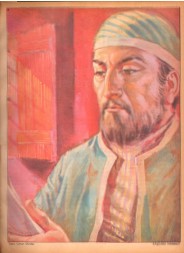- OĞUZ HAN 234-174 BC China, State Administration “More sea, more moray (rivers) / Sun flag, sky kurikan (tent)” http://bitig.org/index.php?lang=e&mod=1 http://bitig.org/index.php?lang=e&mod=1 www.yenimesaj.com.tr/?haber,2015520
- TONYUKUK first 646-724 YunZhong China. Inscription (Turkish khan), I myself, Bilge Tunyukuk, (brought) Turkish people to Ötüken land. hasan b.paksoy http://gokturkanitlari.appspot.com/Tonyukuk Muharrem SEVİL
- BİLGE KAĞAN 683-734 Çugay-Ḳuz Mountain China. Inscription (I), like God (and) Turkish Wise Hakan hasan b.paksoy http://gokturkanitlari.appspot.com/Tonyukuk http://www.simurg. com.tr/tr-tr/product/dilbilim/169368/en-eski-turkish-in-traces-orhun-ve-yenisey-yazitlari-on-sozcukbilim-semantics-and-bicem-science-examinations-aydinlattigi-gercekler.aspx
- KÜLTIGIN 684-731Çugay-Ḳuz Mountain China. Inscription “Kültigin flew on the 17th day in the year of the sheep” http://gokturkanitlari.appspot.com/Tonyukuk
- MAHMUD KAŞGARLI first 1008-1105 Turkestan Kashgar, East Turkestan Chinal Kaşgarlı Mahmut “The Uncrowned Ruler of Turkish Language”, those who guide us, alatlı
- VAPSI BAKŞI 13th century Turkestan Turfan (Kao Chang) China The name of the work he authored at the end of the thirteenth century is “The Book That Teach the Origin of the Heart”. The book that teaches the origin of the heart, the tradition of wisdom that some Uighur thinkers (Kao-chang or Turfan Uyghurs) who did not adopt the Burkan belief embodied in the translation and copyright works that they produced, especially in the Tenth and Eleventh centuries, affected the entire Turkish intellectual life. One of the most notable of the sages of the aforementioned period is Vapşı Bakshi. Presumably, the name of the work he copyrighted at the end of the thirteenth century is “The Book That Teaches the Origin of the Heart”. According to him, it is my ‘consciousness’ that makes me aware of myself and my world. Whatever is going on comes out of consciousness. So being coincides with consciousness. If there is no consciousness, there is no existence. Expressing his merâm in a short, concise, colorful and abundant simile, Vapşı Baksı brings back and connects the subjects of existence, knowledge and morality to a principle: Consciousness. Words in particular, and language in general, are the means of expression of consciousness. Therefore, language is only a means and not an end.
- KAZIM MIRŞAN 1919-…….Turkestan (East) Gulca China Turkologist





















